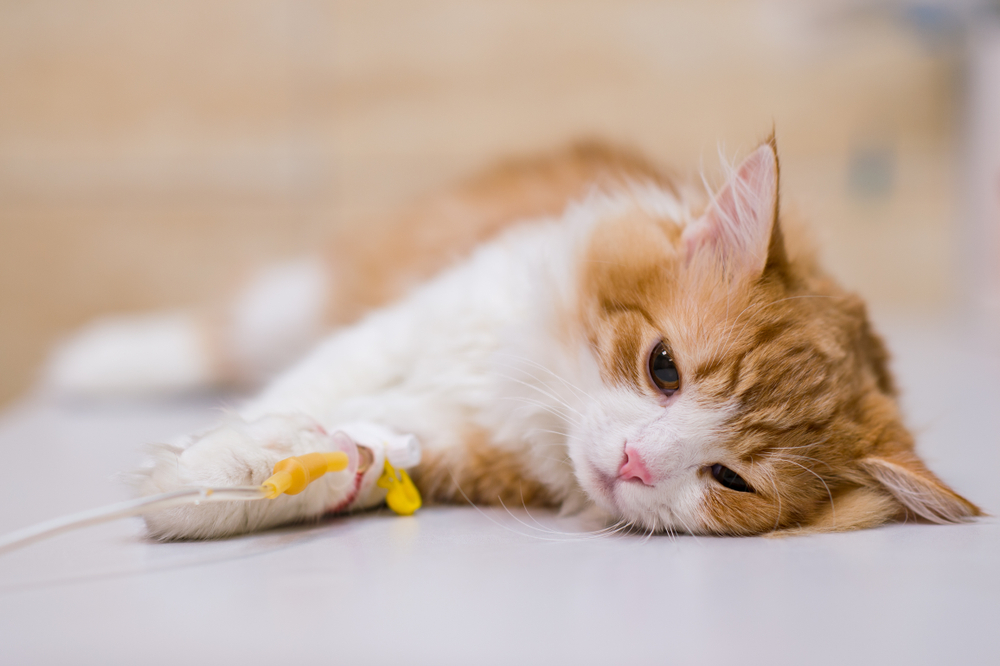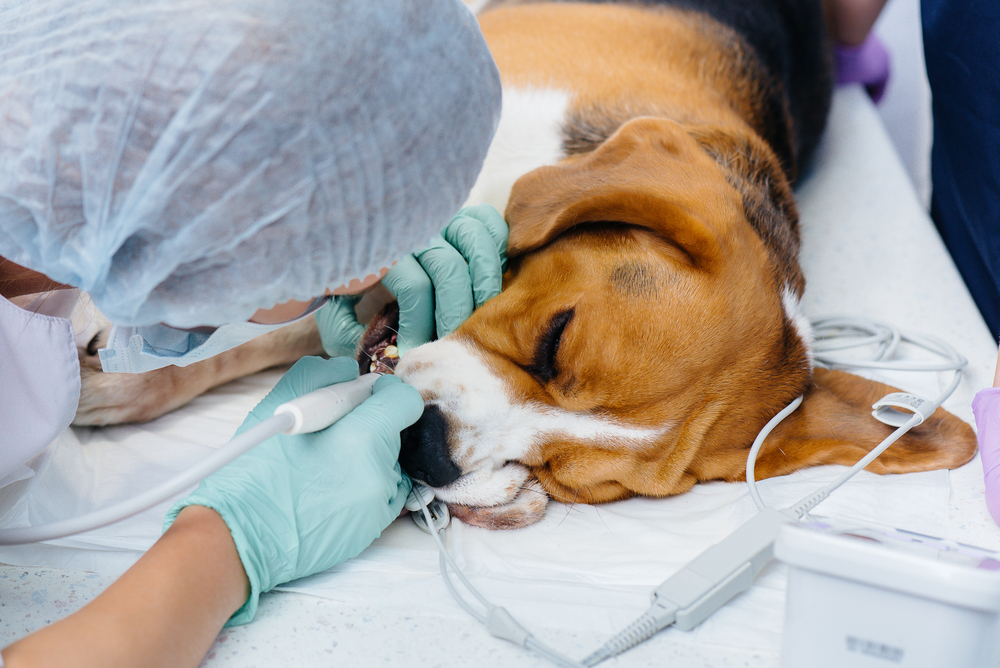Undergoing surgery without being anaesthetized is unimaginable. To keep them pain free and safe, your pet must be anaesthetized for some veterinary procedures such as dental services, diagnostic imaging, and surgery. Our North Waterloo Veterinary Hospital team understands your concern for your pet’s health and safety when they must be anaesthetized, and we want to put your fears to rest. To ensure your pet has a safe anaesthesia experience, we are committed to using advanced techniques, proven protocols, and extensive patient monitoring. To ease your mind before your pet’s veterinary procedure, learn about anaesthesia’s benefits and risks, and the protocols our team follows to keep your pet safe.
#1: Assessing your pet’s health
Before your pet’s anaesthetic procedure, your veterinarian will perform a preanaesthetic pet health assessment to evaluate your beloved companion’s current health status. To determine your pet’s anaesthetic risk and select an appropriate anaesthetic protocol, your veterinarian may also run blood tests and take X-rays.
#2: Creating your pet’s individualized anaesthetic plan
Your veterinarian will customize your pet’s anaesthetic plan based on their age, breed, species, procedure, and individual health needs. To ensure your pet receives appropriate sedation and analgesia (i.e, pain control), your veterinarian will choose medications to create a comfortable anaesthetic experience.
#3: Mitigating your pet’s anaesthesia risks

Anaesthesia is generally extremely safe, and most pets have a low complication risk. Your veterinarian will consider several aspects of your pet’s health status to evaluate their unique anaesthetic requirements. Pets’ anaesthetic risk factors include:
- Age — A pet’s organ function often decreases with age, which can increase their anaesthetic sensitivity. Senior pets usually require lower anaesthetic drug doses. Similarly, pets younger than 2 months often require less anaesthesia because they do not have fully mature cardiovascular systems.
- Size — Anaesthesia often lowers a smaller pet’s body temperature, and they must be kept warm while anaesthetized. A very large or overweight pet may require a high anaesthetic dosage, which can increase the complication risk.
- Breed — The greyhound is the only breed with a documented breed-specific sensitivity to particular anaesthetic drugs. However, veterinarians must also give special consideration to other breeds, including brachycephalic (i.e., flat-faced) breeds, collies, shepherd breeds, Doberman pinschers, and giant breeds.
- Pre-existing conditions — Pets with underlying heart, liver, or kidney disease, and some cancers may have an increased anaesthetic complication risk. Fortunately, preanaesthesia screenings identify many of these conditions.
If your pet has a high anaesthetic complication risk, our team will consult with a board-certified anaesthetist to determine the safest protocol, and may refer your beloved companion to a local specialty hospital to ensure they receive the safest and most experienced anaesthetic care.
#4: Preparing your pet for anaesthesia
To reduce your pet’s stress on the day of their procedure, our veterinary professionals will give your beloved companion a preanaesthetic sedative, and place an intravenous (IV) catheter to administer fluids and medications. Your pet’s anaesthesia may be delivered by gas inhalation, intravenous infusion, or a combination of these two.
#5: Monitoring your pet from preanaesthesia to hospital discharge
To ensure your pet’s safety and comfort, electronic monitoring tracks their vital signs and provides real-time data, including blood pressure, blood oxygen levels, body temperature, and heart and respiratory rates. A registered veterinary technician will continually care for your pet, monitoring them before, during, and after the procedure until your beloved companion has completely recovered from anaesthesia and is ready for discharge. We encourage you to call any time for an update on your pet’s procedure or status, and we will contact you when they are out of surgery and recovering.
#6: Discussing your pet’s post-procedure care
After your pet’s procedure, their veterinary team will discuss the surgery with you, review at-home care instructions, and answer all your questions. At discharge, your pet will be able to stand and walk, but will be tired, and you should keep them calm and quiet for the period your veterinary professional recommends. Any lingering anaesthesia effects, such as grogginess and constipation, should subside in 24 to 48 hours. Your pet’s postoperative requirements may include:
- Activity restriction
- Special diet
- Medication administration
Anaesthesia achieves an effective balance between appropriate sedation and pain control during your pet’s veterinary procedure. For most pets, anaesthesia’s benefits far outweigh the minimal risks. If you have questions about anaesthesia and your pet, contact our North Waterloo Veterinary Hospital team.







Leave A Comment